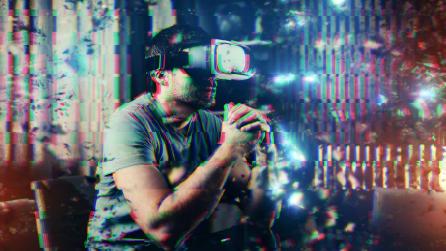Virtual reality: what drives multiple hype waves?
Technological trends in the world of visual effects are no stranger to the idea of the hype cycle. In previous articles, Foundry Trends has looked at some of these in relation to their position on the “Gartner hype cycle”— a commonly used graphical representation of the progression a technology makes from conception to adoption.
On this hype cycle, technologies must make their way from their trigger point across the “peak of inflated expectations”, through the “trough of disillusionment”, before climbing the “slope of enlightenment” onto the “plateau of productivity”.
It may well sound like a quest plotline from a third-rate fantasy film, but this journey has become widely accepted. Many product developers now factor this general route into their decision making.

Double dippers
However, not every technology adheres strictly to this. Some go through multiple cycles – or what could be described as “waves – falling into the “trough of disillusionment” repeatedly, before finally finding success. Virtual reality (VR) is one such example. Its first visit to the trough came in the 90s, after Sega’s much-talked-about VR headset in 1993 disappeared completely without ever actually reaching shelves.
With investment from Google, HTC and Facebook in the early 2010s, it looked as if VR was climbing the slope of enlightenment, but plummeted again thanks to problems with unreliable technology, limited accessibility and uninspired immersion (each of which Foundry Trends has discussed in a series of VR articles over 2018). Only now does the technology appear to be emerging up the slope once again.
If a technology doesn’t successfully navigate its way to the “plateau of productivity” in the first instance, is it destined to repeat the hype waves ad nauseam? A constant cycle of hope and disillusion, without the end game of widespread adoption? Perhaps not.
Hope for VR can be found away from entertainment, in the form of virtual assistants. From the development of the first speech-recognition tools in the 1960s, the “chatbot” navigated stormy waves before reaching its current level of popularity. Despite Gartner last year warning that virtual assistants could soon face a “backlash”, the technology is reaching a point of omnipresence thanks to the rise of the smart speaker.
At least 39 million people now own a smart speaker in the US alone, each equipped with an assistant such as Amazon’s Alexa or Google Assistant. Chatbots are clearly striding up the slope of enlightenment.


What drives the waves?
In both the cases of VR and chatbots, a key driver of hype waves has been the dominant companies of the day. Its name may now be unfamiliar to a generation of young gamers, but those longer in the tooth will remember Sega as an innovative force within the mid-1990s worlds of technology and entertainment. In the late-2010s, it’s the likes of Facebook, Google and Amazon that have taken up that mantle.
The championing of a burgeoning technology by these players, and its application within their huge userbase, can turn something of fringe relevancy into a trend the mass audience not only wants, but feels as if they need.
The other primary driver of waves is the audience itself. The way we search for and consume content has changed beyond recognition. Virtual assistants are booming because people are using voice search far more — according to comScore 50% of all searches will be carried out via voice search by 2020.
Our phones are intrinsic to our everyday life, so technologies that can improve things we already rely on will be stronger wave drivers, while also having more chance of reaching the “plateau of productivity”.

VR: Reaching the plateau
In the case of VR, there is no lacking in the investment placed in the technology by major companies. The market is predicted to reach a value of $40.4 billion in 2020, with 82 million headsets in use around the globe.
However, there are clearly challenges ahead. During this summer’s FIFA World Cup, the BBC created an app for users to watch matches in an immersive environment that simulated watching the game from inside a hospitality box.
A unique offering, if a little unexpected: 325,000 people went on to download the app. But that number doesn’t come close to the 40 million streaming requests the broadcaster received via standard online platforms across the tournament — or the tens of millions watching each game on television or in pubs around the country.
For VR to continue onto the plateau, it clearly needs to cater to its audience. The way we consume entertainment has changed beyond all recognition — from the world of big cinema, blockbuster driven content to the “in your pocket entertainment system” of today.
For clues as to where it can go from here, we spoke to the very people driving VR’s progression along the hype cycle, including Academy Award-winning visual effects supervisor and virtual reality (VR) director, Ben Grossmann, and Tim Dillon, Head of VR & Immersive Content, at MPC.


